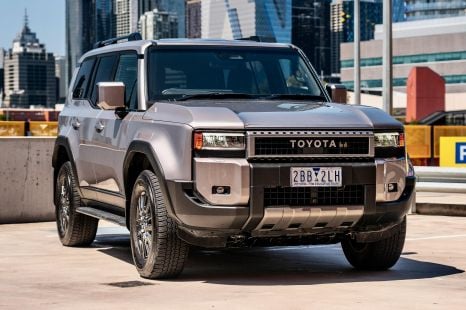

Max Davies
2025 Toyota Prado GXL review
2 Months Ago
There's very little wrong with the new LandCruiser. Toyota's attention to detail is exemplary – but it's also considerably more expensive.
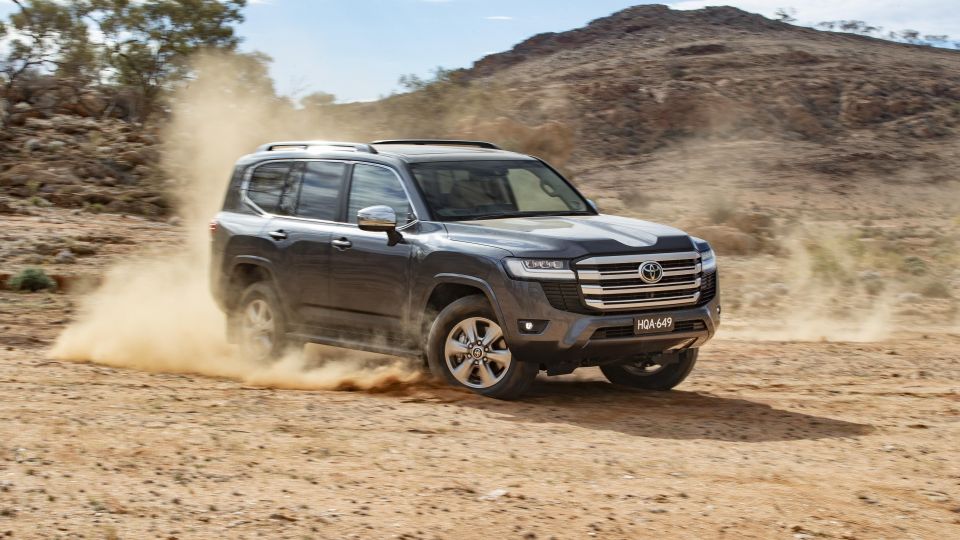
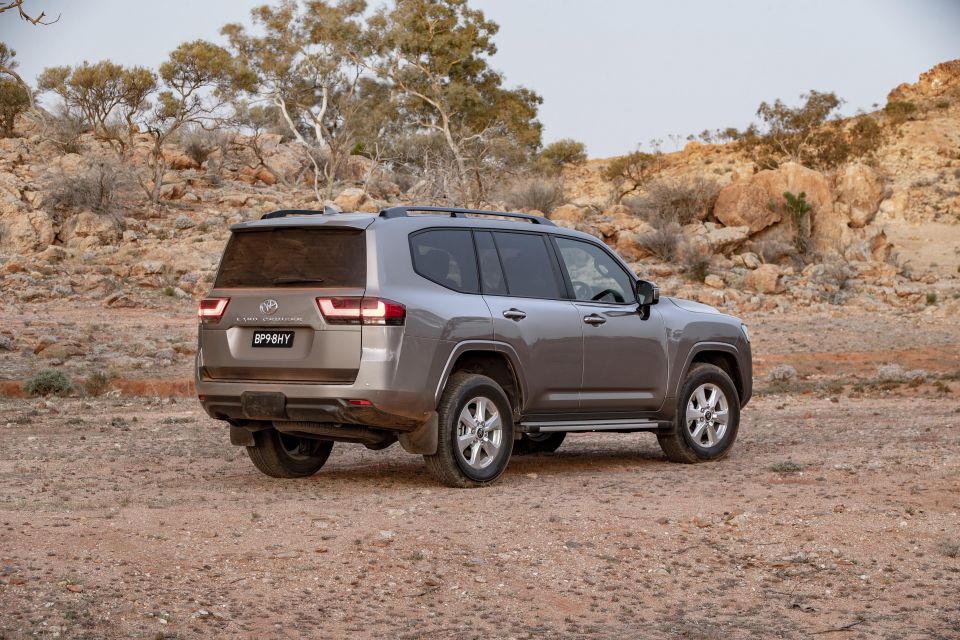

Senior Road Tester
New from
$89,990
excl. on-roads

Senior Road Tester
New from
$89,990
excl. on-roads


Senior Road Tester
New from
$89,990
excl. on-roads

Senior Road Tester
New from
$89,990
excl. on-roads
Quickly see how this car stacks up against its competition. Select any benchmark to see more details.
Where expert car reviews meet expert car buying – CarExpert gives you trusted advice, personalised service and real savings on your next new car.
Not only is it the most anticipated launch of 2021, the arrival of the all-new Toyota LandCruiser 300 Series comes at a time when much of Australia is about to open up its borders, leaving the entire population desperate to pack their car up and motor off in search of relatives and holiday spots. Perfect timing, right?
One glimpse of the new-generation (J300) LandCruiser 300 Series and you know full well whatever delivery delays exist for new cars (thanks to the perfect storm of COVID-19 and semiconductor shortages) are going to make this vehicle very, very sought-after for new car buyers looking for the definitive full-size family SUV.
It’s been a while coming, too, given the previous-generation J200 Series dropped way back in 2007, though it was spruced up with a succession of enhancements – including a facelift in 2015, and its last significant update in 2018, which saw expanded driver aids and safety kit added.
Even though it shares its wheelbase with the outgoing 200 Series and the proportions are similar, the new LandCruiser is otherwise a clean-sheet design from the ground up, and crucially the first to use the TNGA (Toyota New Global Architecture) body-on-frame platform.
The benefits to the model range are huge, if not game-changing as far as the LandCruiser goes given the lightweight materials used, which has not only reduced the overall weight of the vehicle, but also increased body rigidity, ride comfort and handling skills.
If the diehards are worried about losing V8 power (I loved that donk too), don’t be, because the new-generation 3.3-litre V6 twin-turbo diesel is a dead-set cracker, boasting significantly more grunt all round, little if any turbo lag, and with a properly good engine note under full throttle.
I can’t be more enthusiastic of this new powertrain and its pairing with a segment-first 10-speed torque converter automatic transmission. It’s top-shelf kit that rivals some of the best of European makes in terms of noise, vibration, harshness and efficiency.
Despite loads of extra niceties, the 300 Series retains its predecessor’s 3500kg braked towing capacity, but sweetens the deal by adding extra payload depending on the model variant, and a standard tow-wiring harness across the range.
It’s the same story when it comes to the 300’s off-road arsenal, with a newly-developed transfer case that significantly reduces shift times between high- and low-range, while a locking centre differential is now standard across the line-up. There’s also a new-generation multi-terrain select system designed to be more intuitive and better equipped with new auto modes, which are better able to detect the type of terrain underfoot.
Inside, it’s hard to believe it’s a LandCruiser, at least not by 200 Series standards. It’s a fresh approach to cabin design that incorporates all the latest infotainment tech and screens with a more functional approach to switchgear, by grouping buttons according to their functions.

Comfort is also one of the big takeaways with new LandCruiser, and while I didn’t get to spend any time in the lower-end variants, the mid-spec VX looks and feels more like a Lexus to me.
There’s even a couple of new variants to choose from. You can still get the GX, GXL, VX and Sahara, albeit with significant price increases over the equivalent 200 Series (depending on variant), but Toyota has added a couple of extra-tasty derivatives to the range, with the ultra-luxurious Sahara ZX and the hardcore GR Sport for more serious off-roading.
It seems everything has been put under the microscope given the significance of the LandCruiser nameplate, especially in Australia.
Much of the development work on the 300 Series was done as far back as 2014, when local and Japanese engineers covered 20,000km in 72 days on- and off-road in a bid to work out how to improve the model. They also collaborated directly with owners for real-world intelligence from those who used their LandCruisers daily.
Clearly, that effort has paid dividends if our first drive is anything to go by.
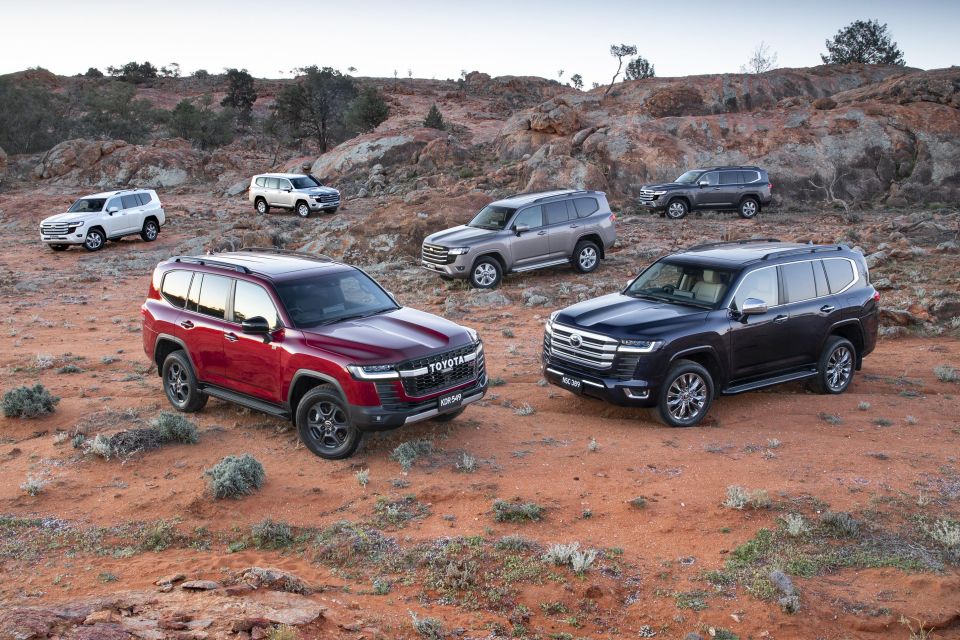
Pricing is up by as much as $10,000 over the equivalent 200 Series, depending on which of the four carryover model variants you choose.
All prices exclude on-road costs.
Options are few and far between and amount to premium paints only, priced at $675.
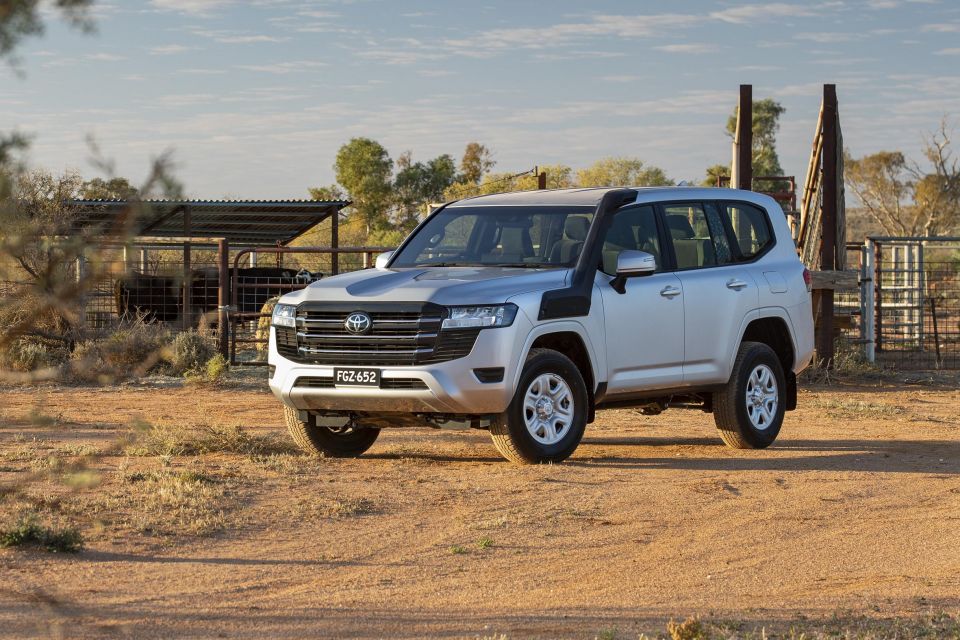
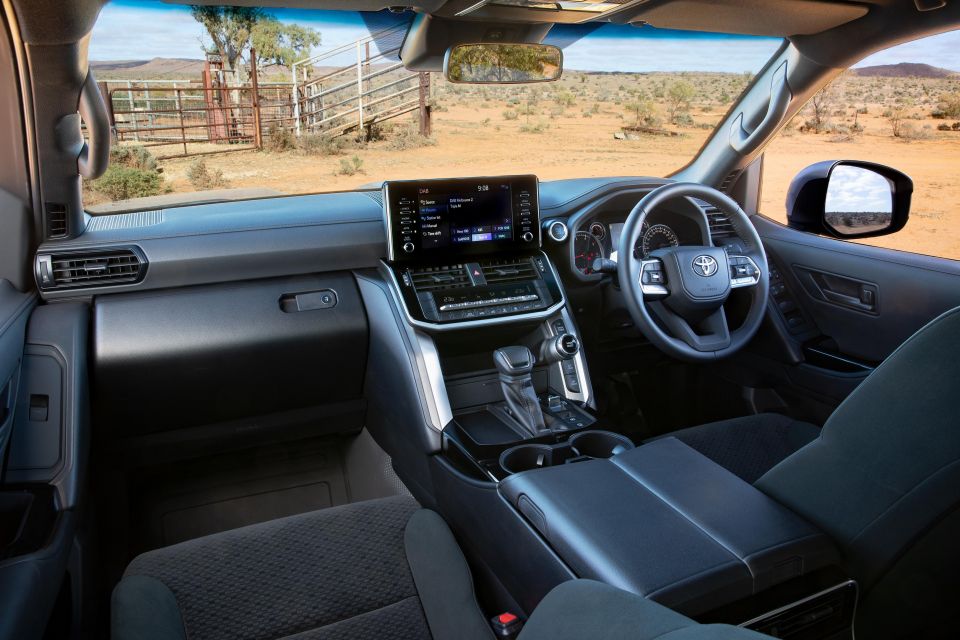
For starters, all LandCruiser 300 Series are equipped with the same 3.3-litre V6 twin-turbo diesel engine, mated to a 10-speed auto transmission with manual shift mode.
Also standard across the entire range is a lockable centre differential, a 110-litre fuel tank (80L main, 30L sub), low-range transfer case, front double-wishbone independent and four-link rigid axle suspension with coil springs (Sahara ZX and GR Sport variants get adaptive variable suspension), ventilated front and rear disc brakes, hydraulic variable power steering, and a 200A alternator.
LandCruiser GX highlights:

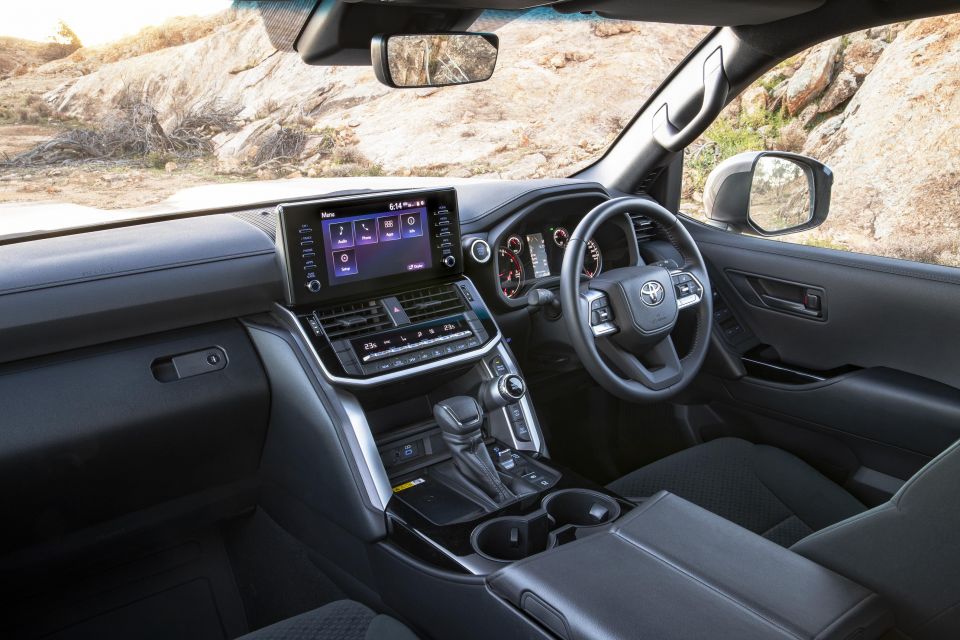
LandCruiser GXL adds:
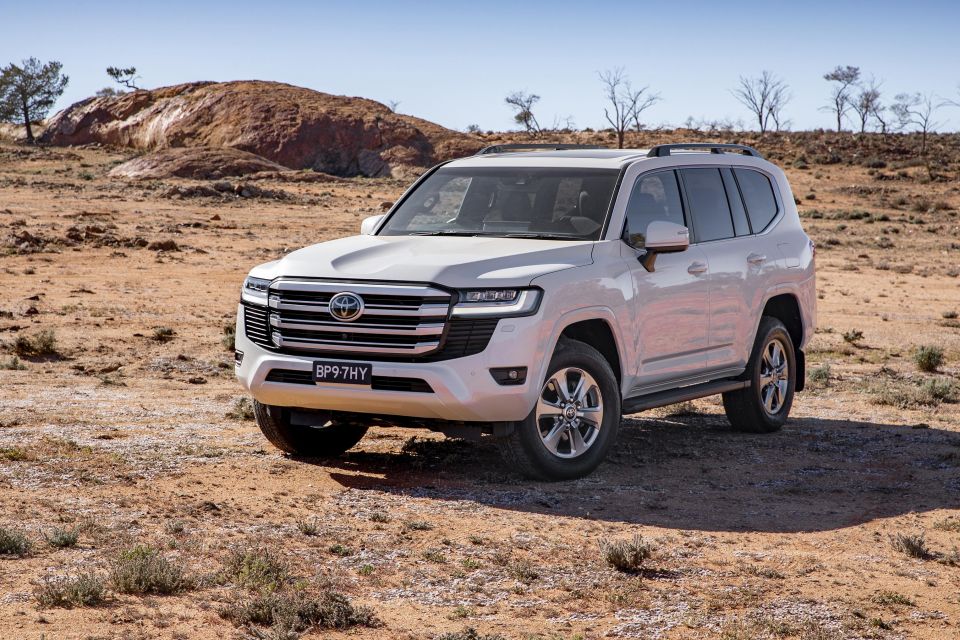
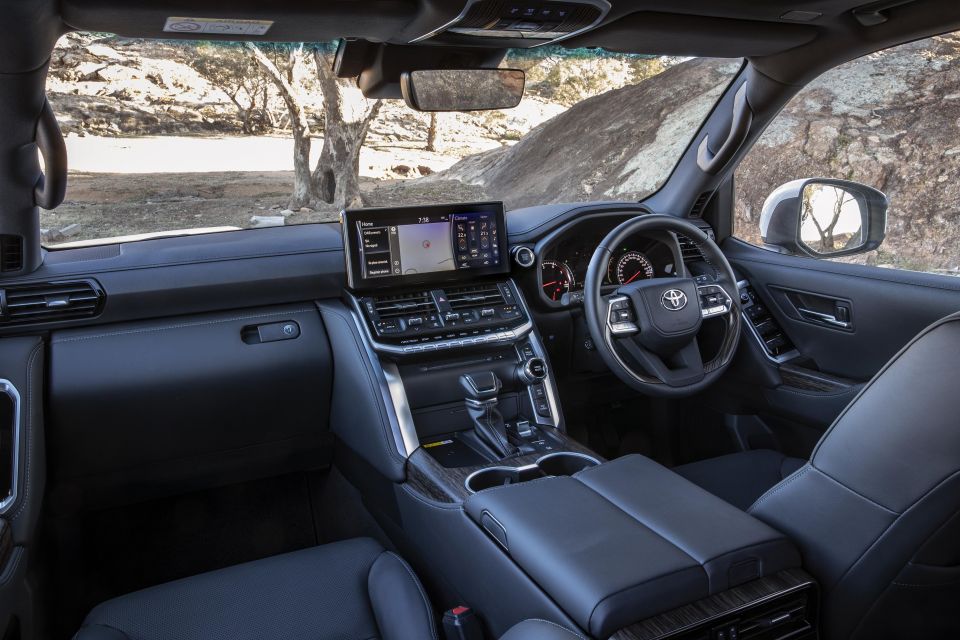
LandCruiser VX adds:
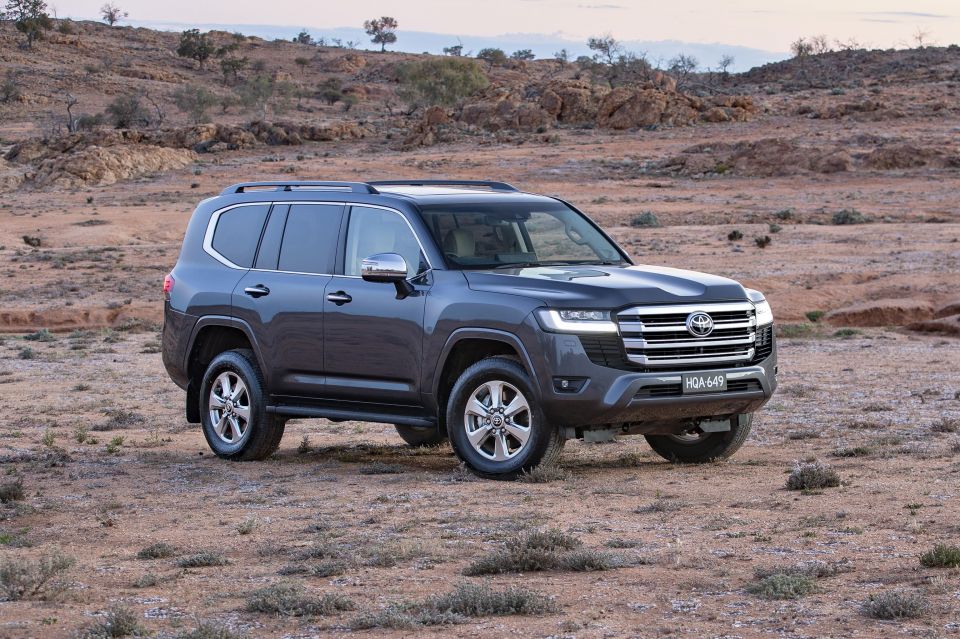

LandCruiser Sahara adds:
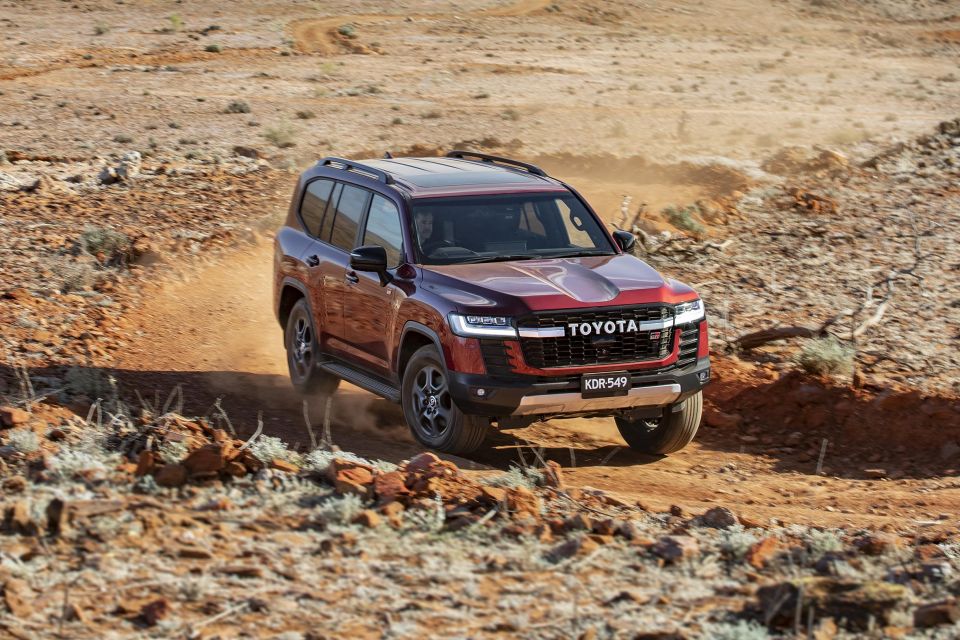
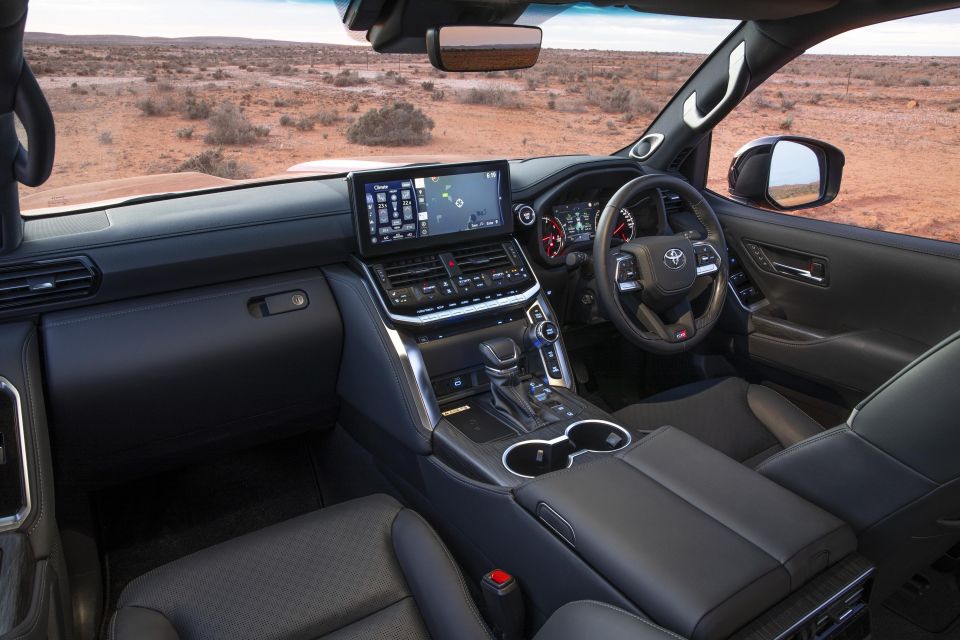
LandCruiser GR Sport adds (over Sahara):
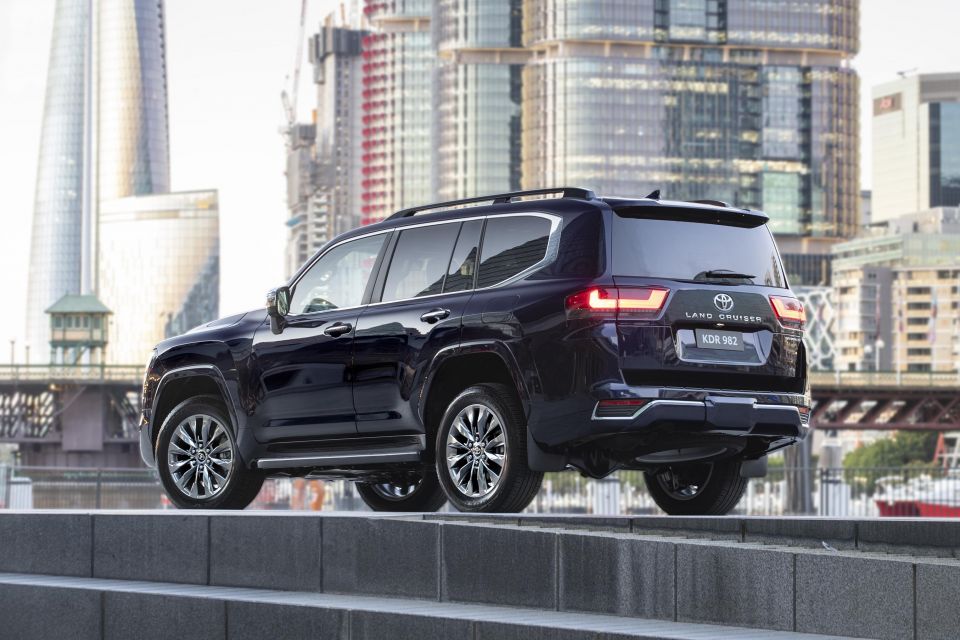
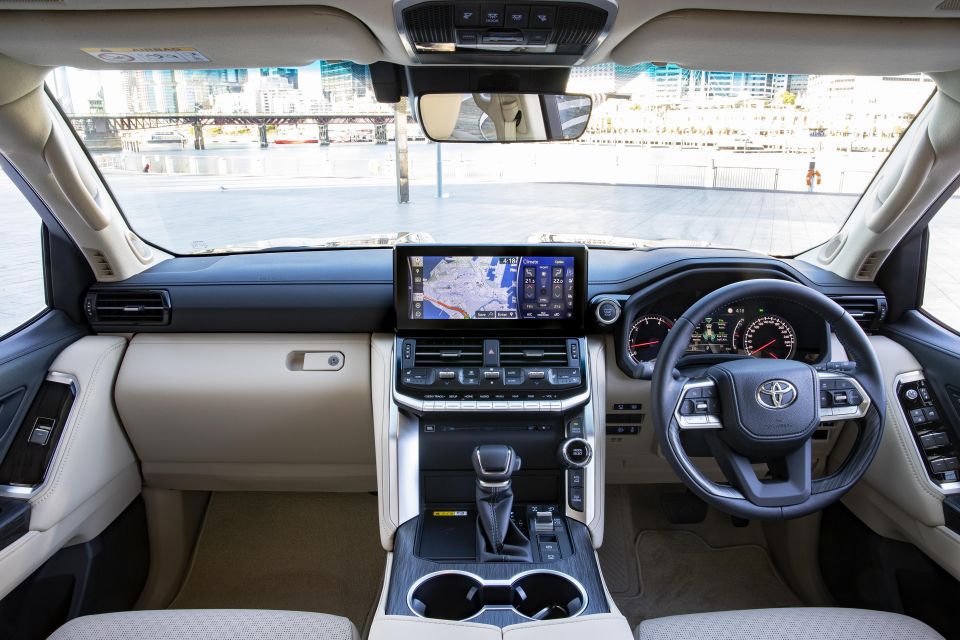
LandCruiser Sahara ZX adds (over Sahara):
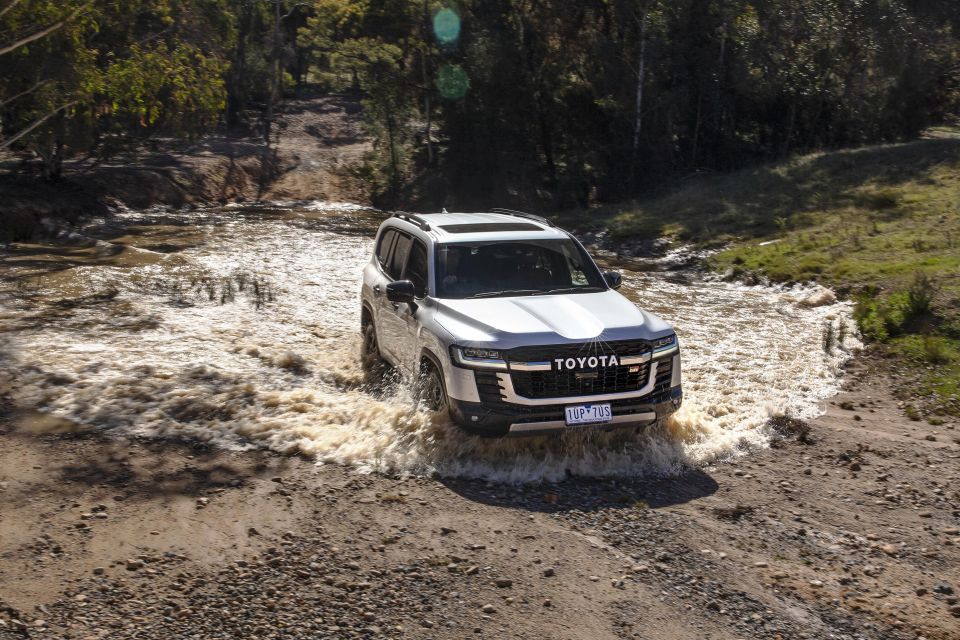
While the LandCruiser 300 Series gets plenty of standard safety kit, it’s yet to be crash tested by ANCAP or Euro NCAP.
Even the entry-level GX is fitted with a comprehensive suite of safety systems, including:
The GXL adds:
The VX, Sahara, GR Sport and Sahara ZX add:

Any way you look at it, the LandCruiser 300 Series looks and feels several generations ahead of the model it replaces. It’s not just the suite of new technology, though that alone is a giant leap forward, it’s the overall design that impresses.
The dashboard layout and centre console are superb for their layout, materials, and general driver usability and intuitiveness. This is a new vehicle you can climb aboard and head off into the great outdoors without any instruction or user manuals.
Take the steering wheel, for example. Normally, it takes me some time to get familiar with adaptive cruise control details, like setting and changing the speed, as well as setting the distance between you and the car in front. No such nonsense with the new LandCruiser – within seconds I’d set the speed and distance on the motorway south of Sydney.
It’s those seemingly insignificant details that count, and it’s clear the engineers paid a lot more than lip service to 200 Series owners when they came to Australia way back in 2015.
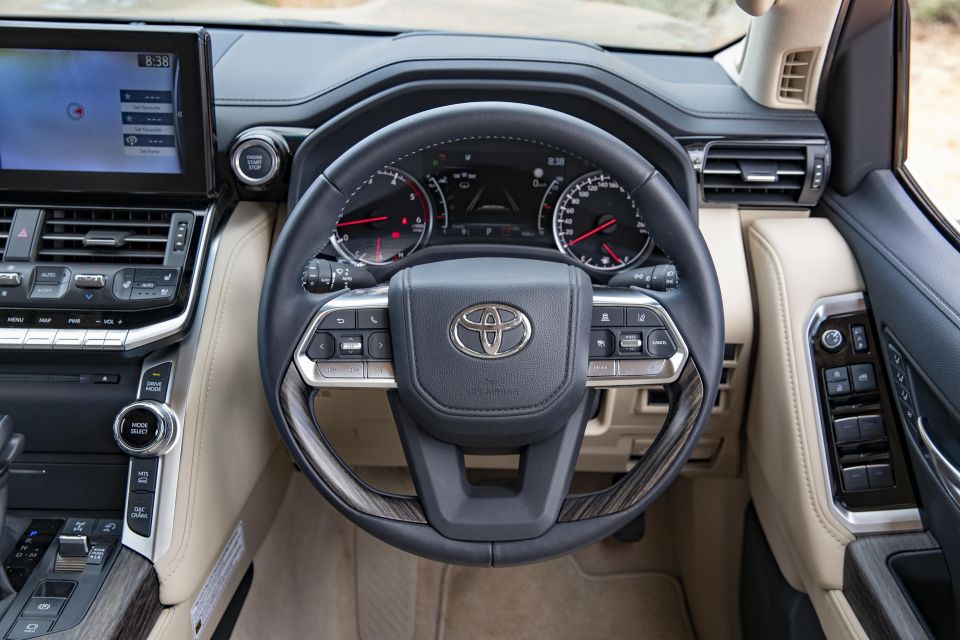
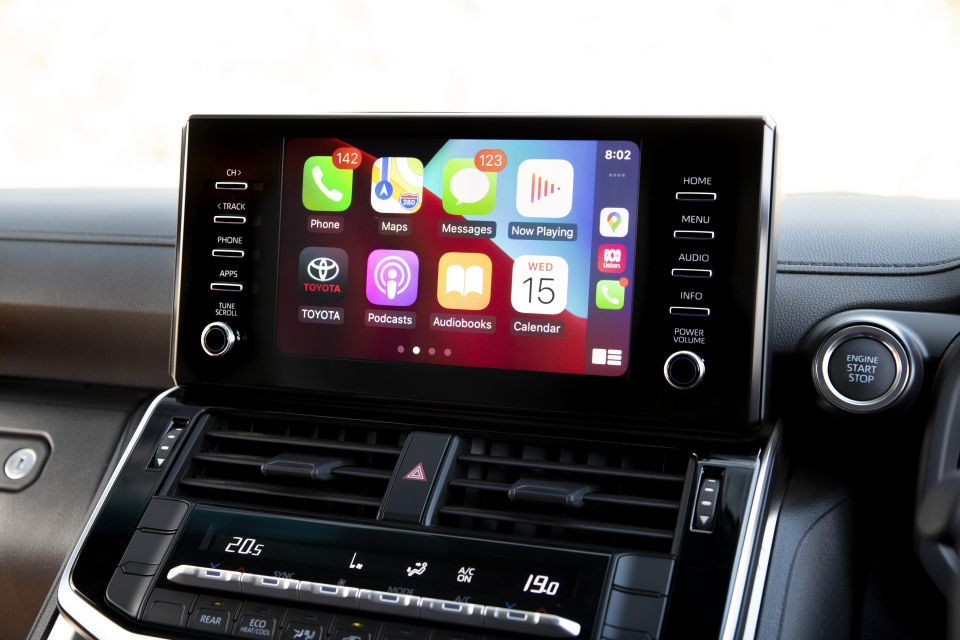
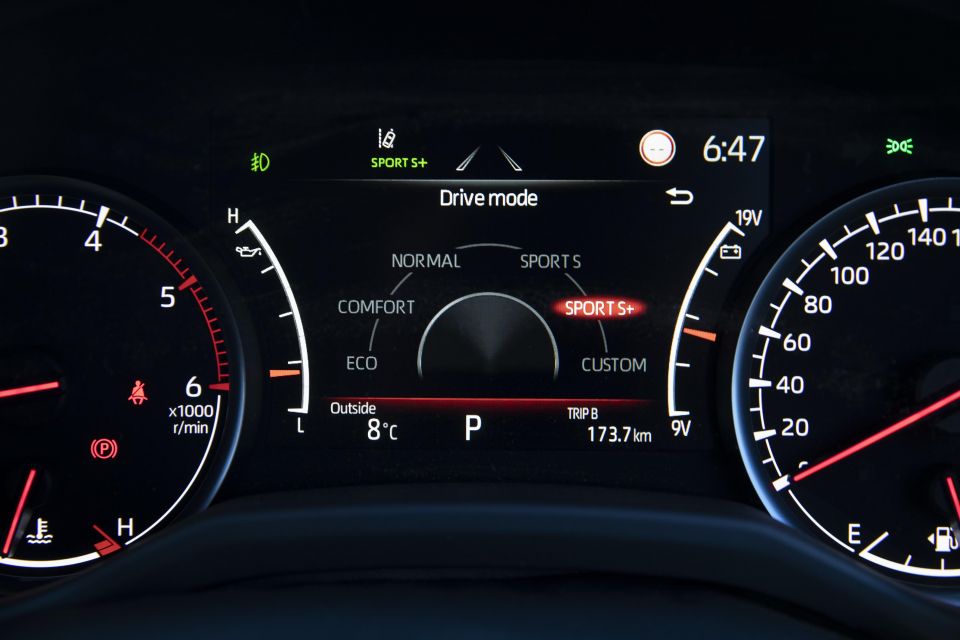
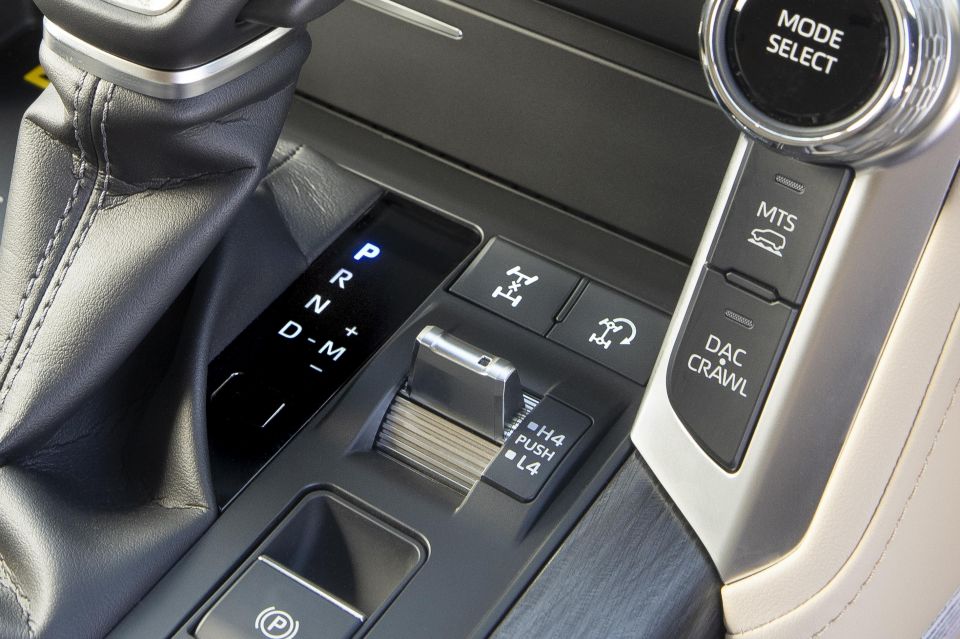
The start/stop button is positioned for clear sight, while also protruding for easy access, in stark contrast to some rival makes which like to play hide and seek with this feature much to my annoyance.
There’s no fully-digital driver’s instrument display and for a split second that annoyed me, but then the information within the binnacles is clear and easy to read at a glance, while offering a configurable 7.0-inch display in the centre for those drivers like me that mandate a digital speed readout as a form of licence insurance along with cruise control.
Front and centre is a huge 12.3-inch touchscreen in the VX and up, which did take a bit of time to find the optimum configuration depending on what you had going on, if not Apple CarPlay.
All the switchgear is grouped depending on the function, which is hugely refreshing, and the fact there’s just the right number of buttons and dials for the climate control and drive mode selection rather than the unfortunate situation of an all-screen, button-free setup. It’s spot on.
The seats offer superb support and comfort, regardless of whether you’re in the VX, Sahara or GR Sport, though time restraints on the day prevented us from seat time in the lower-spec variants. But after an initial 250-kilometre stint to the off-road base, I was as fresh as a daisy.
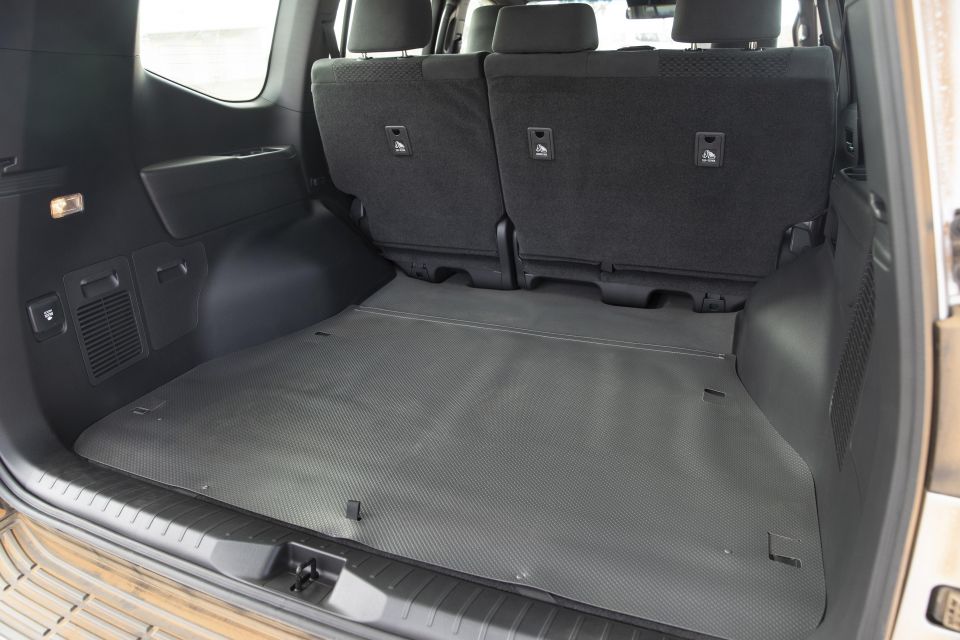

The brushed metal trim looks and feels close to some Euro makes, as do most of the plastics. However, I’m not all that fussed about the pretend wood finish on some of the more premium versions. Same goes for the ‘Advanced Carbon’ in the top-spec Sahara ZX.
Plenty of soft-touch materials feature throughout the entire vehicle, in fact, hard plastics are scarce and even those that are look and feel premium. It’s a quality cabin, no question, and one that also looks to stand the test of time and everyday wear and tear.
With a minimum length of 4980mm and stretching to 5015mm in the Sahara ZX, there’s a stack of real estate inside. Legroom is limo-like for second-row passengers, while boot space is 1131 litres behind the rear seats, expanding to 2052 litres when folded. It’s colossal if you’re used to a small SUV, which might be lucky to get 460 litres in the very largest example.
For those variants with three rows, there’s 1004 litres available with the third row down, growing to 1967 litres when both second and third rows folded, and the third row folds dead flat into the floor for easy loading. There’s power-folding in the Sahara, too, which makes setting the LandCruiser up as a seven-seater a breeze.
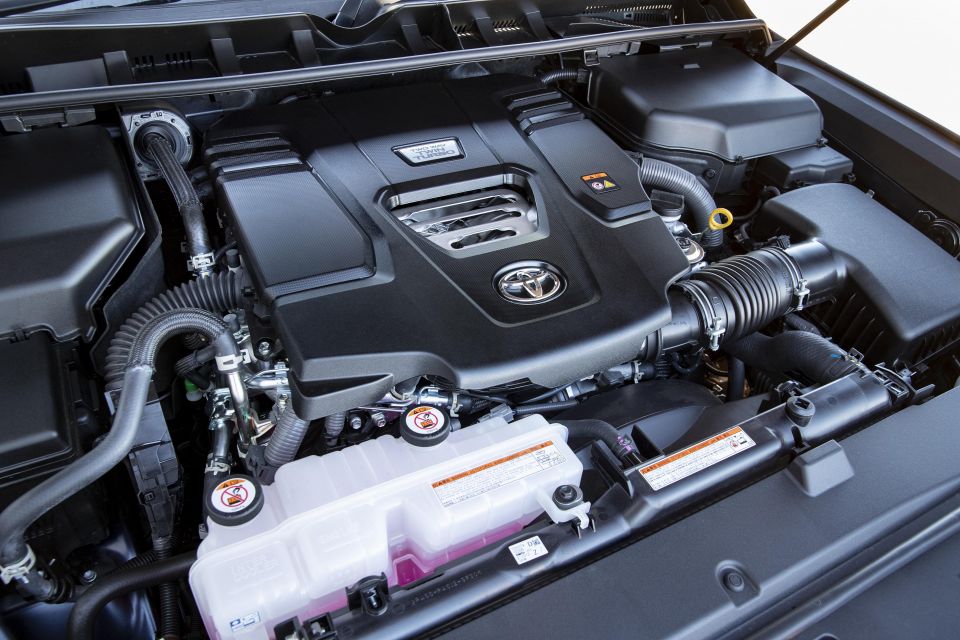
Where expert car reviews meet expert car buying – CarExpert gives you trusted advice, personalised service and real savings on your next new car.
Never mind the demise of the 4.5-litre twin-turbo V8 diesel in the previous version, this newly-developed V6 knocks it on the head when it comes to sheer grunt.
Despite the fact its down 1.2 litres and two cylinders on the outgoing LandCruiser 200, LandCruiser’s new F33A-FTV 3.3-litre V6 twin-turbo diesel has been built from the ground up, making 227kW of power and 700Nm of torque, the latter between 1600 and 2600rpm.
That’s 27kW and 50Nm more, or an improvement of 13.5 per cent and 7.7 per cent respectively over the previous V8.
It’s more efficient, too, by 6.3 per cent on the combined cycle test, with a rating of 8.9L/100km and CO2 emissions of 235g/km.
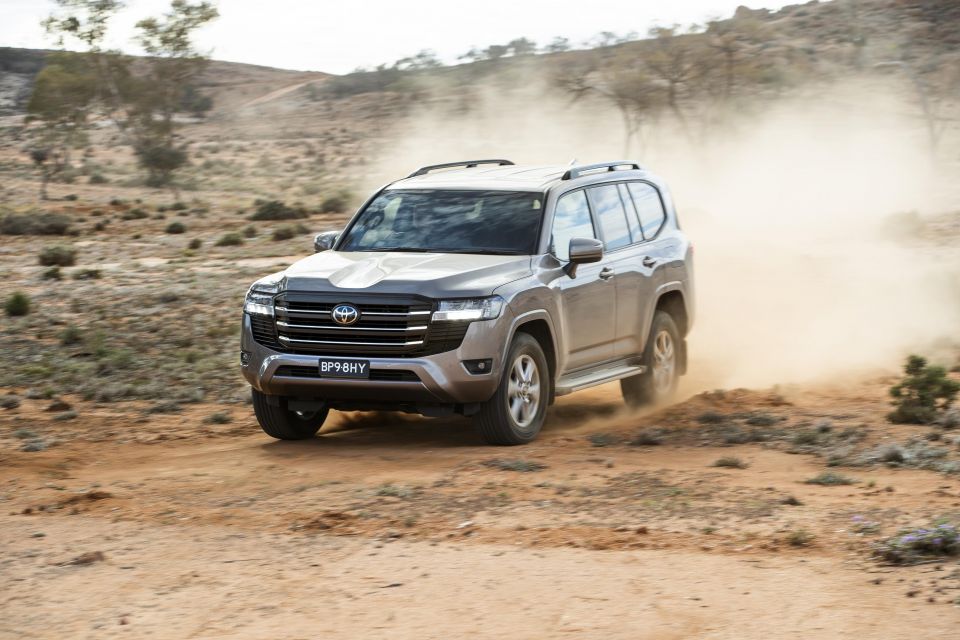
With COVID-19 restrictions still in place at the time of the launch, the test program was not as comprehensive as it normally would have been, but opened with a 232km highway run from Sydney CBD to Lower Borough, where there were a couple of off-road trails awaiting us.
We kicked off in the ‘regular’ Sahara, which looks and feels on-par with the current Lexus product, especially in our Graphite-coloured tester with tan leather upholstery.
Like most folks, I wasn’t sure how I would feel about the loss of that brilliant 4.5-litre twin-turbo diesel, which is now in such high demand among the Toyota stalwarts. It went well and produced a good note to boot.
But here’s the thing, right from the get-go you’re probably going to warm to the new 3.3-litre twin-turbo six. Not just for its 227kW and 700Nm outputs, but for its overall refinement and response under the right pedal.
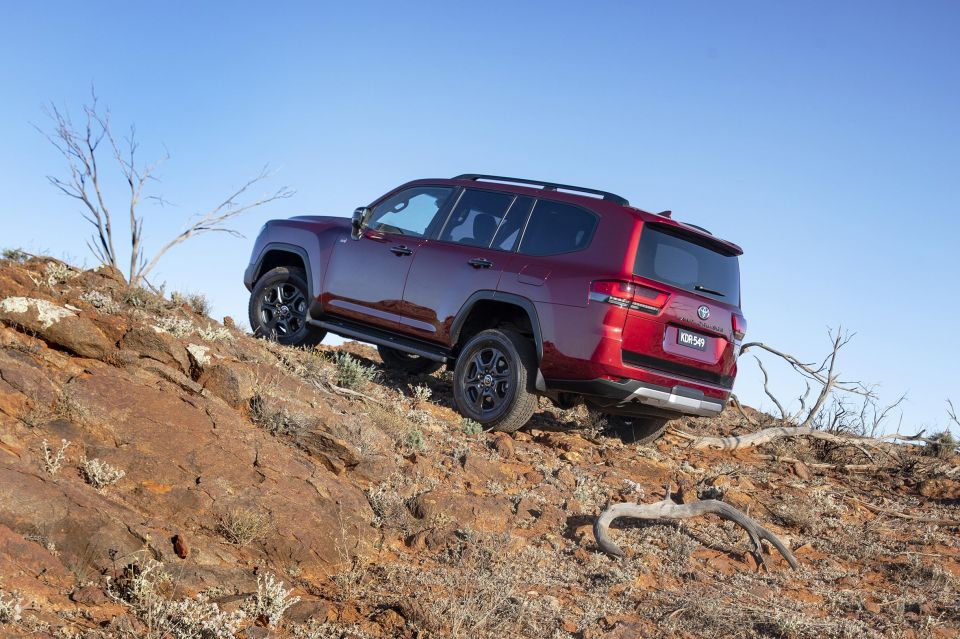
Punch it, and it just gets up and goes with minimal lag thanks to both turbos being calibrated to maximise low-speed torque. From just 1600rpm you’ve got all 700Nm on song and it just keeps on pulling from there.
Knowing the new motor was paired with a new 10-speed auto transmission was another cause for concern, given my experience with the similarly-ratio’d unit in the Ford Mustang GT. But the shifter in the new LandCruiser is in another league entirely – shifting twice as fast as the as the previous six-speed auto, and with a lower ratio in first gear for better response off the line.
We tried all three drive modes (Eco, Normal, Sport) and found Sport to be thoroughly usable, if not enjoyable, compared to some makes and models where the gear ratios are held for too long to be properly satisfying.
It feels lighter on its feet than the old car, and quicker to respond to all major inputs. No surprises there, either, given the liberal use of lightweight materials in new LandCruiser, effectively slicing up to 160kg from its heft. The roof, bonnet, doors and rear hatch are mostly aluminium, while spot-welding and lighter, more compact components have shed further mass.
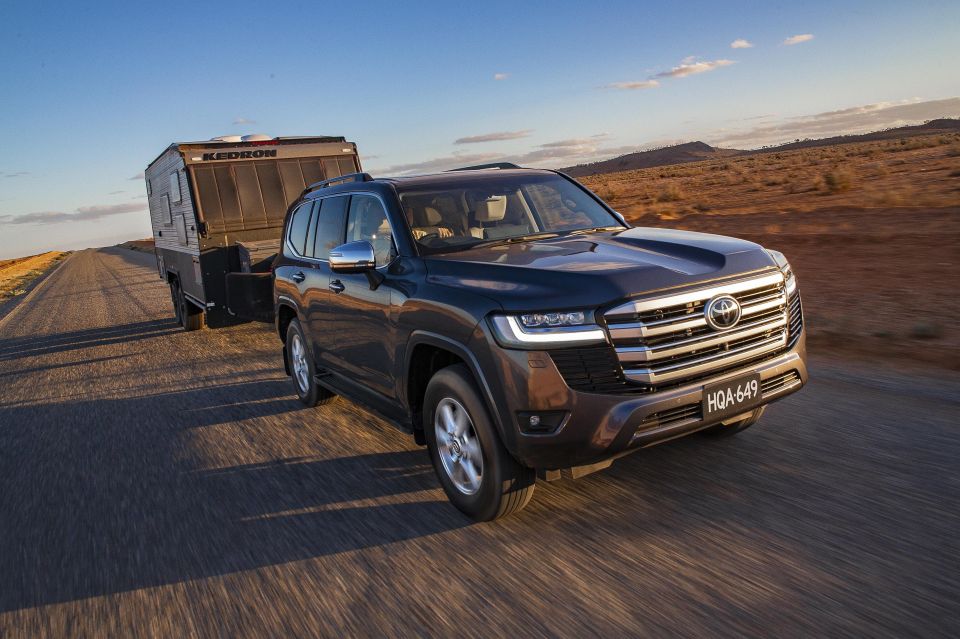
There’s no adaptive suspension system on the standard Sahara, so initially I found the fixed-rate settings to be a tad firm, but seemed to get used to it pretty quickly so I eventually forgot about it. Mind, there’s still some gentle (but well-controlled) body roll on turn-in given its 2630kg weight and sizeable proportions, but you can definitely feel the additional rigidity at play.
Hopping into the hardcore GR Sport for the return trip to Sydney provided a chance to test out both the combined on-road effects of adaptive variable suspension and active front and rear stabiliser bars. And, those effects are instantly felt from the very first time you turn in.
It’s rock solid, with little discernible roll at 100km/h into bends on the undulating B-roads I found myself on. I pushed on a bit when I noticed another vehicle in my rear-view getting too close, and it just gets better with more steering feel and even more composure. Not what I was expecting from the hardcore off-road LandCruiser.
For the off-road trails we climbed into the mid-spec VX, still with plenty of comfort and luxury inside the cabin, but also extremely capable off the beaten track. While the trails were labelled ‘moderate’ and ‘hard’ offering a selection of deep ravines, ruts and rock-hoping terrain, most of the work could have been handled in high range, though low-range was engaged for the steeper climbs where grip became more challenging.
If anything, neither trail was much of a challenge thanks to the LandCruiser’s latest multi-terrain select, which allows drivers to select from any one of six modes depending on the gearing range. It’s just so easy to use on the run, although you still need to put the vehicle into Neutral when switching from high- to low-range.
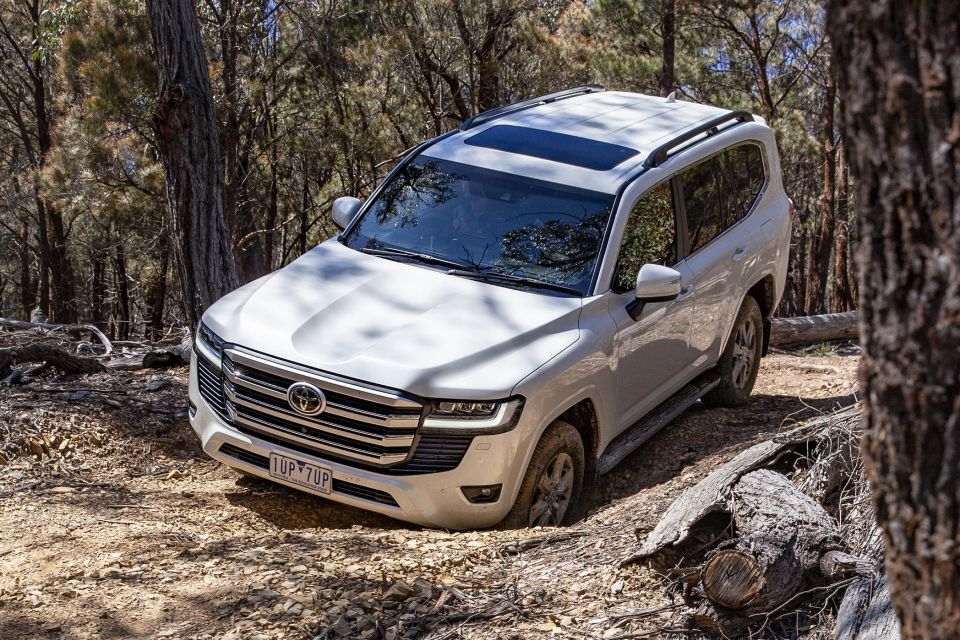
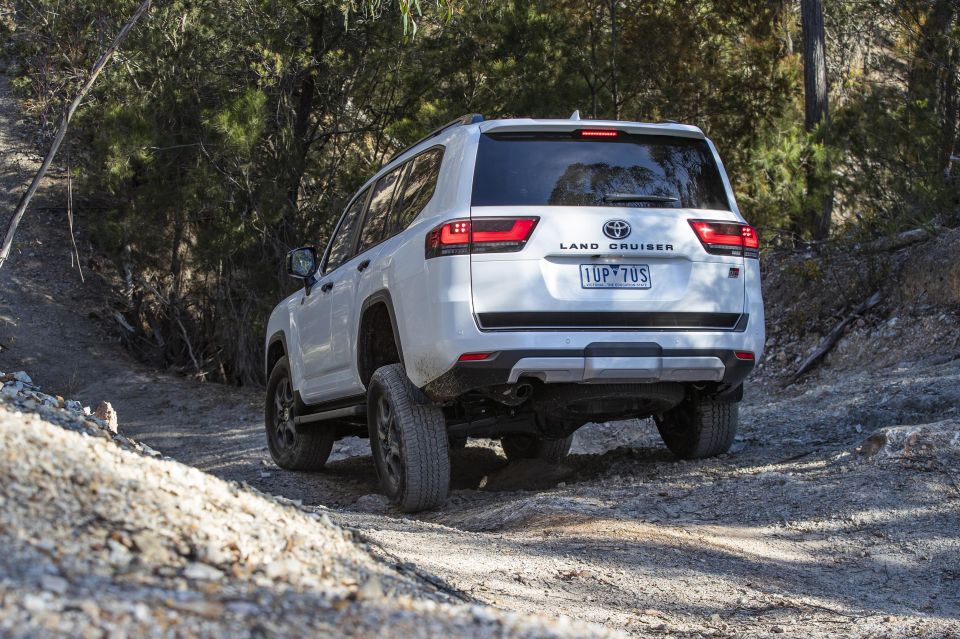
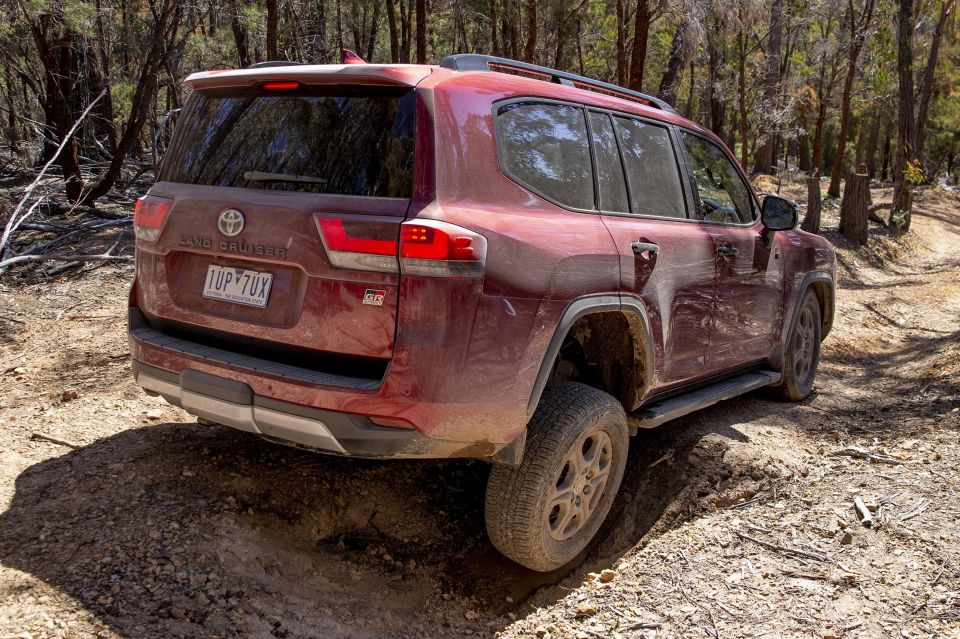
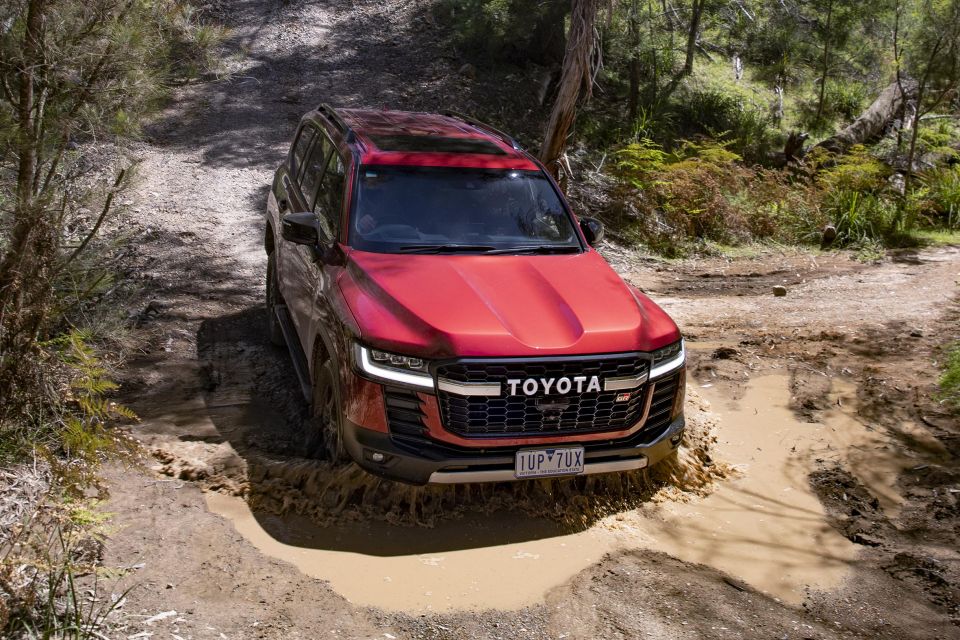
The other big takeaway during the off-road sessions was the sheer comfort it delivered, no matter what terrain. The level of compliance and bump absorption is impressive. I’d liken it to a Range Rover in this regard. Seriously.
The speed-adjustable crawl control is another excellent feature that seems to work more dependably on the LandCruiser than some Euro equivalents, and makes it dead-easy to engage and control the speed of your decent on the run. It’s also got ‘turn assist’, which effectively shortens the turning circle of the LandCruiser off-road by braking the inside rear wheel during a turn when ‘Crawl’ is activated. It’s brilliantly effective as we found out on the narrower tracks.
I came away from the off-road testing itching to get hold of the GR Sport over some more challenging trails – or at least something that would demand more of this vehicle’s heavy-duty, 4×4 arsenal.
We also got to experience the Cruiser’s towing talent in the top-shelf Sahara ZX, where we were pulling an impressive Kedron 21-foot caravan that tipped the scales at around 2.9 tonnes – on a gravel road, no less.
Even at a good clip into turns the LandCruiser felt properly composed, though I’m the first to admit I haven’t done a whole lot of towing beside box trailers and the occasional jet-ski.

The Toyota LandCruiser is backed by a five-year, unlimited-kilometre warranty in Australia matched with seven-year coverage on the powertrain.
In addition, Toyota Service Advantage covers capped-price servicing for the first 10 service visits at a cost of $375 per service. However, intervals are every six months or 10,000km – whichever comes first.
Owners can also extend their warranty cover on the engine and driveline to up to seven years by sticking to the service schedule.

There are buyers out there who have likely never considered the Toyota LandCruiser over more prestigious Euro metal, but you owe it to yourself to take the new 300 Series for a thorough test drive.
This will be a game-changer for a tonne of reasons, over and above Toyota’s built-in reliability and robustness of the LandCruiser nameplate itself.
There’s a number of standout features – the new, more powerful V6 engine; the more contemporary styling; the fresh approach to cabin design; the enhanced comfort and luxury feel; the more rigid body; and the level of standard equipment. Then there’s the off-road capability… and the list goes on.
No vehicle is ever perfect, but for me this comes mighty close.
Clearly, this is only a first-look across a few variants, and single reviews on each model variant will follow in due course.
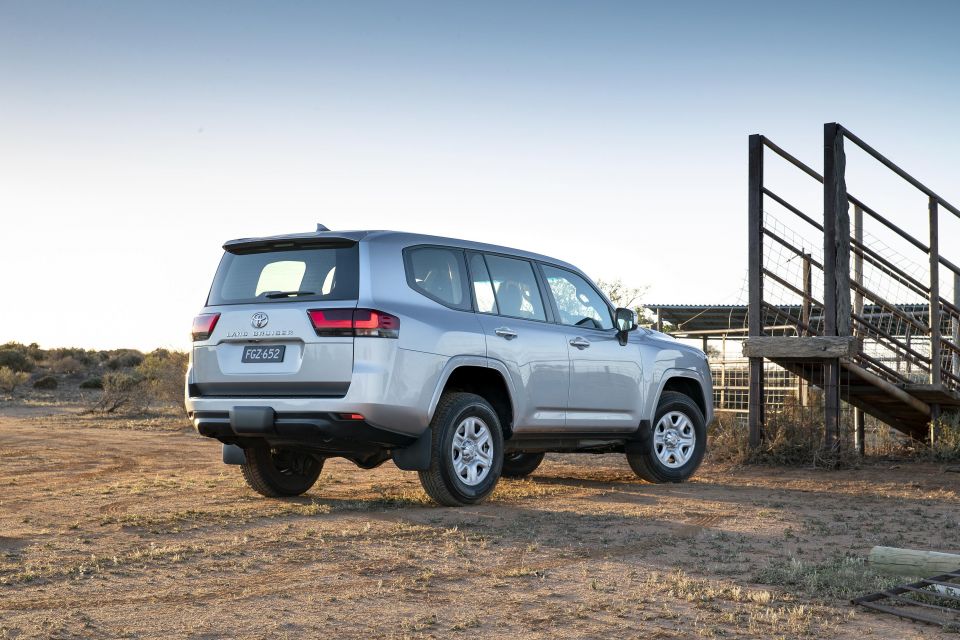
Click the images for the full gallery
Where expert car reviews meet expert car buying – CarExpert gives you trusted advice, personalised service and real savings on your next new car.


Max Davies
2 Months Ago


Matt Campbell
2 Months Ago
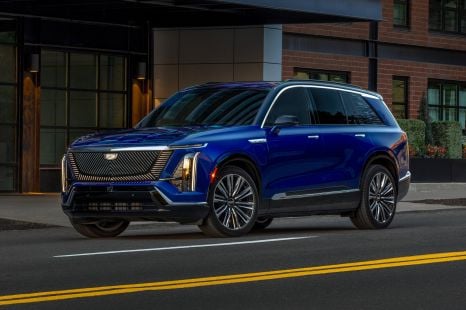

William Stopford
2 Months Ago
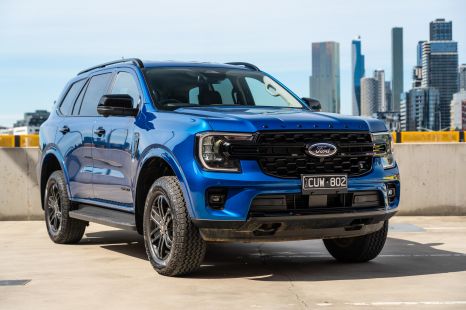

Josh Nevett
1 Month Ago


Max Davies
28 Days Ago
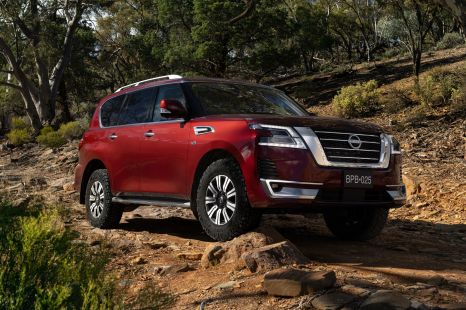

CarExpert.com.au
17 Days Ago